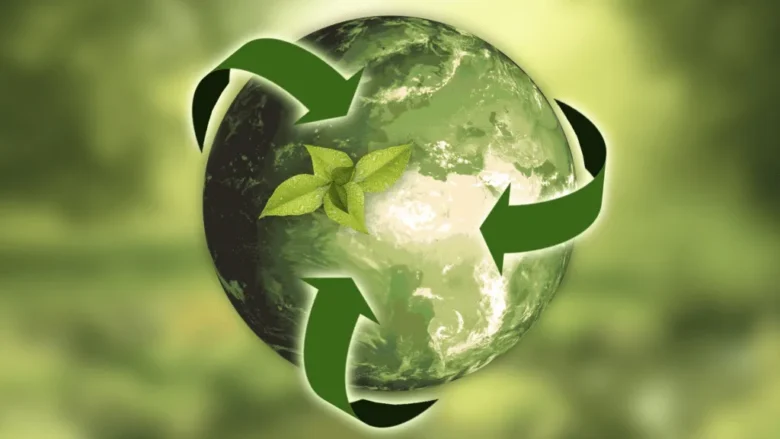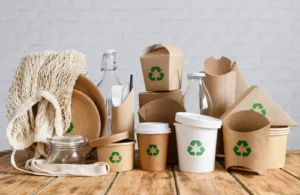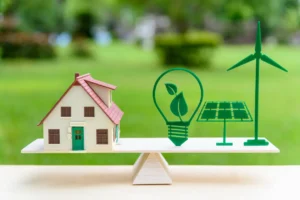Waste is an inevitable byproduct of human activity, but the scale at which we generate and discard waste today is unsustainable. The traditional “take, make, waste” model has placed significant strain on our planet’s resources and ecosystems, leaving us in an era characterized by diminishing resources and growing environmental challenges. The circular economy offers a transformative alternative to tackle these issues. This sustainable approach to waste reduction reshapes how we consume, produce, and think about resources. By transitioning from a linear model to a circular one, society can achieve a more sustainable, resilient, and waste-free future.
The Linear Economy vs. the Circular Economy
The linear economy operates under a straightforward premise. Resources are extracted, processed into products, used, and eventually discarded as waste. This “take, make, dispose” system has driven global industrialization and modern consumerism, but its flaws are evident—finite resources are depleted, while landfills fill with discarded materials. The circular economy, however, envisions a closed-loop system. Instead of waste, materials are reused, repaired, refurbished, or recycled back into the supply chain. It prioritizes sustainable resource use over convenience, ensuring that products and materials maintain their value for as long as possible.
Principles of the Circular Economy
At its core, the circular economy rests on three foundational principles. First, it addresses waste elimination by designing products that can be repaired, reused, and recycled efficiently. Second, it seeks to keep products and materials in circulation for extended periods, reducing the demand for virgin resources. Lastly, the circular economy actively supports regenerating natural systems, ensuring that ecosystems thrive. These principles form the backbone of a sustainable system that aims to grow economies without compromising environmental integrity.
Benefits of Adopting a Circular Economy
The adoption of a circular economy strategy results in several significant benefits. It reduces environmental degradation by mitigating waste and pollution. Economically, it makes businesses more resource-efficient, lowering raw material costs and creating new revenue streams from secondary markets. Societies also benefit as circularity creates more localized repair and remanufacturing jobs. Perhaps most critically, the circular economy addresses the urgent issue of climate change by curbing greenhouse gas emissions through reduced extraction and production activities.
Challenges in Implementing a Circular Economy
Despite the promise of the circular economy, adopting this approach is not without its challenges. Individual consumers and businesses are often entrenched in the habits of the linear model, making behavioral shift difficult. Infrastructure for proper recycling, repair, and reuse may also be lacking in many regions. Additionally, redesigning products for circularity can be resource-intensive for companies. Governments must support the transition with policies, financial incentives, and awareness campaigns. Without widespread involvement, scaling the circular economy can remain an arduous task.
Case Studies
Examples around the globe illustrate how the circular economy is already making an impact. Ikea, the global furniture giant, has started “buy back” programs that repair and resell pre-owned furniture, ensuring these items don’t end up in landfills. Similarly, Patagonia has embraced circular principles with its “Worn Wear” initiative, which encourages customers to repair, trade, or donate old clothing. These case studies demonstrate that integrating circularity into business models can be highly effective, fostering both sustainability and profitability.
The Role of Technology
Technology plays a pivotal role in enabling the circular economy. Advanced data analytics and AI can forecast resource needs, optimize supply chains, and identify waste reduction opportunities. 3D printing facilitates localized production and repair of goods, reducing the dependency on long-distance shipping. Internet-of-things (IoT) devices can monitor the usage and maintenance of products, extending their lifespan. Emerging tech like blockchain ensures transparent tracking of materials, minimizing fraud and ensuring compliance with recycling goals.
Government Policies and Support
Governments are crucial drivers of the circular economy, creating the frameworks and incentives necessary for systemic change. Policies mandating stricter waste management practices, recycling benchmarks, and extended producer responsibility programs hold businesses accountable for the entire lifecycle of their products. Financial incentives, such as tax breaks for sustainable innovations, encourage corporate participation. Public awareness campaigns educate individuals on the importance of sustainability, fostering a grassroots-level commitment to circularity.
The Future of the Circular Economy
The future of the circular economy is promising but contingent upon global collaboration. Businesses must move beyond sustainability as a “buzzword” and fully integrate circular principles into their operations. Governments should remain committed to creating enabling environments through robust regulation and funding innovation. Consumers, too, play a role by demanding transparent, sustainable practices from the brands they support. The path ahead involves overcoming obstacles, but the collective benefits from successfully implementing a circular economy far outweigh the efforts required.
Taking Action for a Sustainable Future
The circular economy is more than just a waste reduction strategy—it is a call for systemic change to how humanity uses resources. By prioritizing sustainability, innovation, and collaboration, we can tackle the environmental crises facing our planet while unlocking new economic opportunities. Whether as consumers making informed choices or as businesses adopting responsible practices, each of us holds the power to contribute. The circular economy is not a distant goal; it’s a movement we can—and must—embrace today.
FAQs
1. What is the circular economy in simple terms?
The circular economy is a system aimed at eliminating waste and continuing the use of resources by reusing, repairing, and recycling products and materials instead of discarding them.
2. How is the circular economy better than the linear economy?
Unlike the linear “take, make, dispose” model, the circular economy ensures sustainable use of resources, reduces environmental harm, and creates new economic opportunities.
3. Can small businesses adopt circular economy principles?
Yes, small businesses can start by redesigning products for reusability, using recycled materials, and encouraging customers to return used items for refurbishment.
4. How does the circular economy help the environment?
By reducing waste, curbing resource extraction, and lowering greenhouse gas emissions, the circular economy significantly lessens humanity’s environmental footprint.




